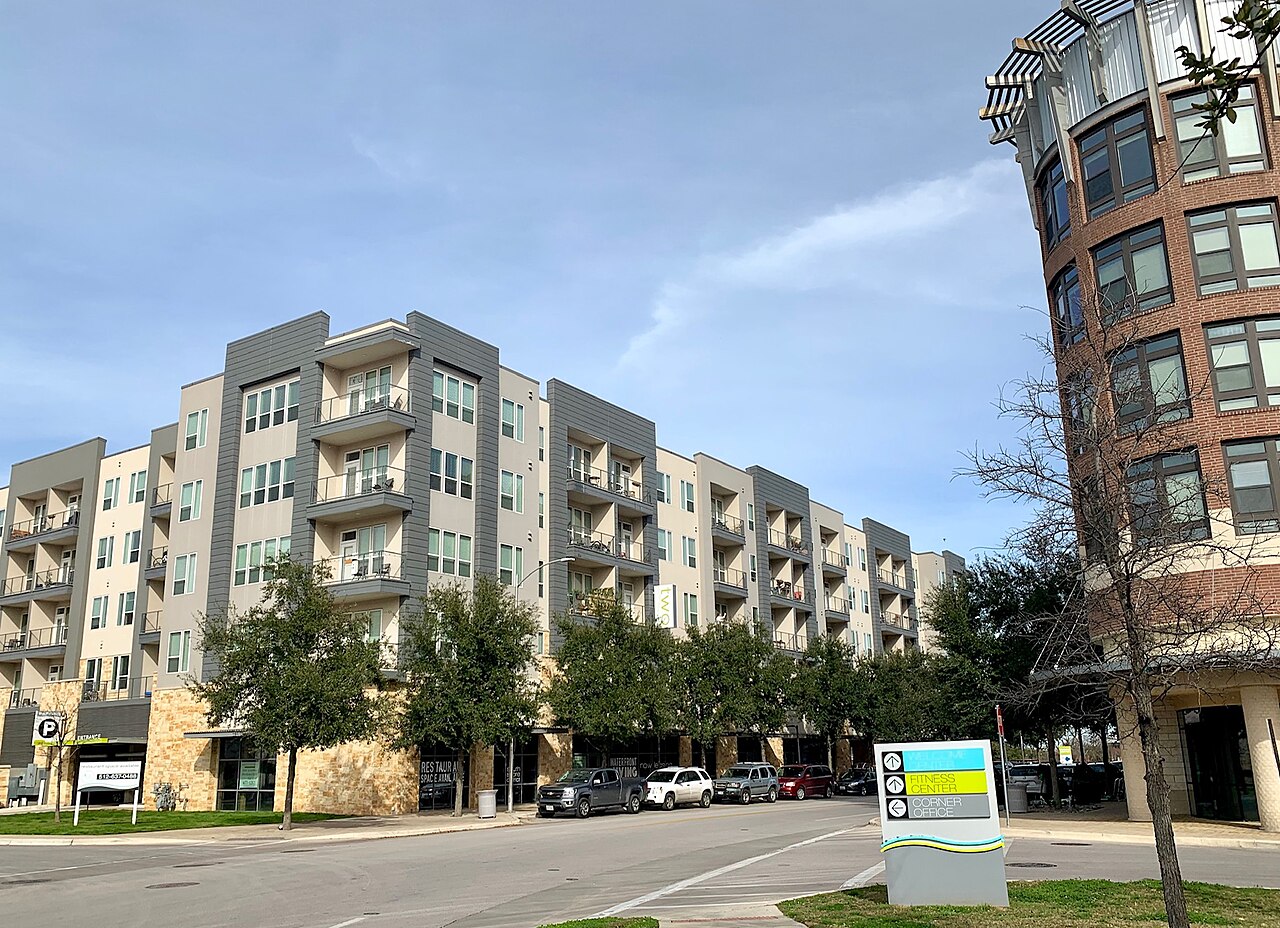We’re likely preaching to the choir, but gentrification is the process by which a poor area of a city experiences an influx of wealthy, usually white residents. This displaces the mostly minority inhabitants of a neighborhood by driving up housing prices.
Social justice activists have focused on five-over-one architecture, seen below, as a symbol of gentrification. That moniker comes from most of these buildings’ character: a brick, multi-use first floor with up to five additional levels for high-density residence. Most developers choose this style when erecting new housing in older, urban districts. It’s easy to see why. Five-over-one housing is cost-effective, quick to build, and doesn’t look all that bad. The recent boom in this sort of architecture has created a newfound awareness of gentrification in urban neighborhoods. In fact, a popular TikTok trend spotlights five-over-one buildings for that very reason.
But activists’ general antipathy for five-over-one distracts from the genuine issues with gentrification.
Now, of course five-over-one construction can be a sign of gentrification. But it isn’t always an indication of wealthier residents displacing their low-income, mostly minority counterparts. Sometimes, five-over-one architecture actually helps lower housing costs, per this TikTok by user Jacob Gotta.
The primary reason for five-over-one’s popularity is that it’s the cheapest way to build housing, per most contemporary zoning laws. So even when cities allocate resources toward building low-income housing, it’s usually designed to be five-over-one. Building codes incentivize varying exteriors and certain fire-preventative materials while bureaucratic tendencies lead to quicker approval for more formulaic aesthetics.
If you aren’t a fan of the appearance, that’s your right. But we should shift the discourse on gentrification from what it looks like to what it does to people’s lives.
Rather than labeling every aesthetically similar building as “gentrifying,” take a beat and investigate the housing prices and history of that building. If its construction displaced minority residents of that neighborhood, then it’s gentrification. It the building’s presence drove up housing costs, which priced low-income residents out of the area, then it’s gentrification. When it comes to something as important as affordable housing, we should seek evidence that goes beyond what we see.
This disparity between real-life effects and aesthetic preference is played out every day in local city council and zoning meetings. That is the appropriate venue to air concerns about five-over-one housing. Some municipalities have instituted citizen review boards to endorse architecture that matches its neighborhood. Not only can these groups help break up the repetition of five-over-one housing, but also preserve local history.
That solves the aesthetic issue. The “human” issue, however, is more difficult to rectify.
One obvious solution is to incentivize more low-income construction. That way, new development doesn’t have to displace low-income residents. In most places, this would require a massive upheaval of zoning laws. In short, you can’t build whatever you want wherever you want it. Zoning laws dictate where different sorts of buildings can exist. We’ve been highlighting a recent zoning battle in Connecticut, where organizers want to transition single-family zones to multi-family, fixed-income properties. That’s the solution toward which most communities should strive. By opening huge tracts of unwalkable land for the right development, we can provide housing for all.
Gentrification isn’t a necessary evil. There are ways we can remedy its impact on minority communities without falling for the aesthetic trap. Keep that in mind when you see a five-over-one building in your neighborhood.

